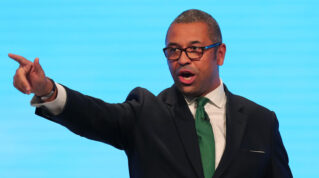School teacher and leader unions were called to a cloak and dagger meeting at 9am this morning – the last Friday of a testing half term – with no advanced notice of the content.
Almost as soon as the meeting was finished, Gillian Keegan released another glossy video saying she wants to protect pupils and parents from future school disruption. Ignoring the fact that a further 43 schools were added to the list of those disrupted by RAAC just yesterday, she wants to shift the focus onto us.
Her demand: to open discussions on minimum service levels in schools to prevent further disruption from strike action. If we can’t come to a voluntary agreement with her, she will impose them.
Let’s be clear: No member of the National Education Union voted for or took national strike action last year because they wanted to disrupt education. Nor, indeed, to lose vital income during a cost-of-living crisis.
They voted in vast numbers – twice – passing the undemocratic thresholds set by government – twice – because education is in crisis. Our members agonised over taking strike action on each day. When they balanced the short-term loss of their classes against the long-term gains for every pupil, they came to a clear conclusion. They made banners and joined marches and demonstrations because education was and continues to be in crisis.
I know that because, unlike Gillian, I was with them and I listened. Teachers, leaders and support staff on rallies across the country all told the same stories. The recruitment and retention crisis means more teachers than ever were have to teach outside of their specialism. PE teachers are covering geography and maths; English teachers are teaching A Level politics.
Another difference between Gillian and me: I’ve taught. Indeed, I’ve taught outside of my specialism. And it nearly broke me.
Minimum service levels is precisely what NEU members were striking to demand
Meanwhile, school leaders are forced to cut curriculum choices for pupils in music, art, drama, DT and RE because they cannot recruit specialist staff. No one becomes a school leader to do that; we lost 4,000 of them before retirement last year.
The impact on young people is potentially life-changing. Year 11 students being taught by a chemistry specialist for one of their three lessons a week if they’re lucky, with the rest spent supervised in the hall. A year 7 with a passion for literature and performance having 22 temporary English teachers because the school must prioritise exam classes. Primary children in classes of over 31 with no permanent teaching assistant. Schools struggling to support 4 or 5 ECTs as the workload of mentors increases.
Minimum service levels is precisely what NEU members were striking to demand. It’s what we should be able to provide in every school, every day. Parents knew and understood that. They see the system is at breaking point.
I admire Keegan’s ambition, but she is focused on the wrong problems.
She should be focusing on working with the unions to develop a workforce strategy to prevent the haemorrhaging of experienced professionals. We need serious engagement on workload reduction.
She should be focusing on the fact that in June the National Audit Office announced that it believed one-third of our school building stock had passed its lifespan. Some 700,000 children are being taught in buildings that are not fit for purpose.
She should be focusing on children and young people waiting up to three years for CAMHs referrals and specialist help. School staff are stepping in to support children, young people and families in crisis.
She should be focusing on children and parents who are literally fighting to get an ECHP and the education they are legally entitled to.
Keegan should be working with the profession and their trade union representatives to build relations and not put further strain on them. Expecting school leaders to implement a minimum service level that takes aim at a worker’s fundamental right to take legal strike action will do nothing to attract candidates to the role.
Keegan says she wants children and parents to ‘feel safe in the knowledge that they will continue to access the education they need and deserve’.
She could start by stopping the threat of ceilings caving in.
















What will this minimum level be?
What if schools cannot meet the minimum level when staff are not on strike because there is not enough money or there are not enough staff available. What will Gillian do then?
As a starter I would say minimum service level should be:-
Classes no more than 30.
All classes taught by properly qualified teacher for that age group and subject.
All teachers to have minimum level of PPA.
All SEND pupils have appropriate support all the time.
Chip in with other suggestions.
This article is spot on and I chime with every sentence.
That the person (Gillian Keegan) is paid far more than any of our brave striking colleagues but shares none of our passion for education is the issue.
What’s she threatening here? If we won’t work during a strike is she going to fire us? Those people who work 30-40 unpaid hours each week to ensure our students get what they need. The people the government are struggling to recruit and retain. Schools are on their knees, if you listen and help us then we don’t strike. If you value us and stop overworking us we don’t leave. You need to be thinking about what you can do to help us, not what you can do to take away our rights.